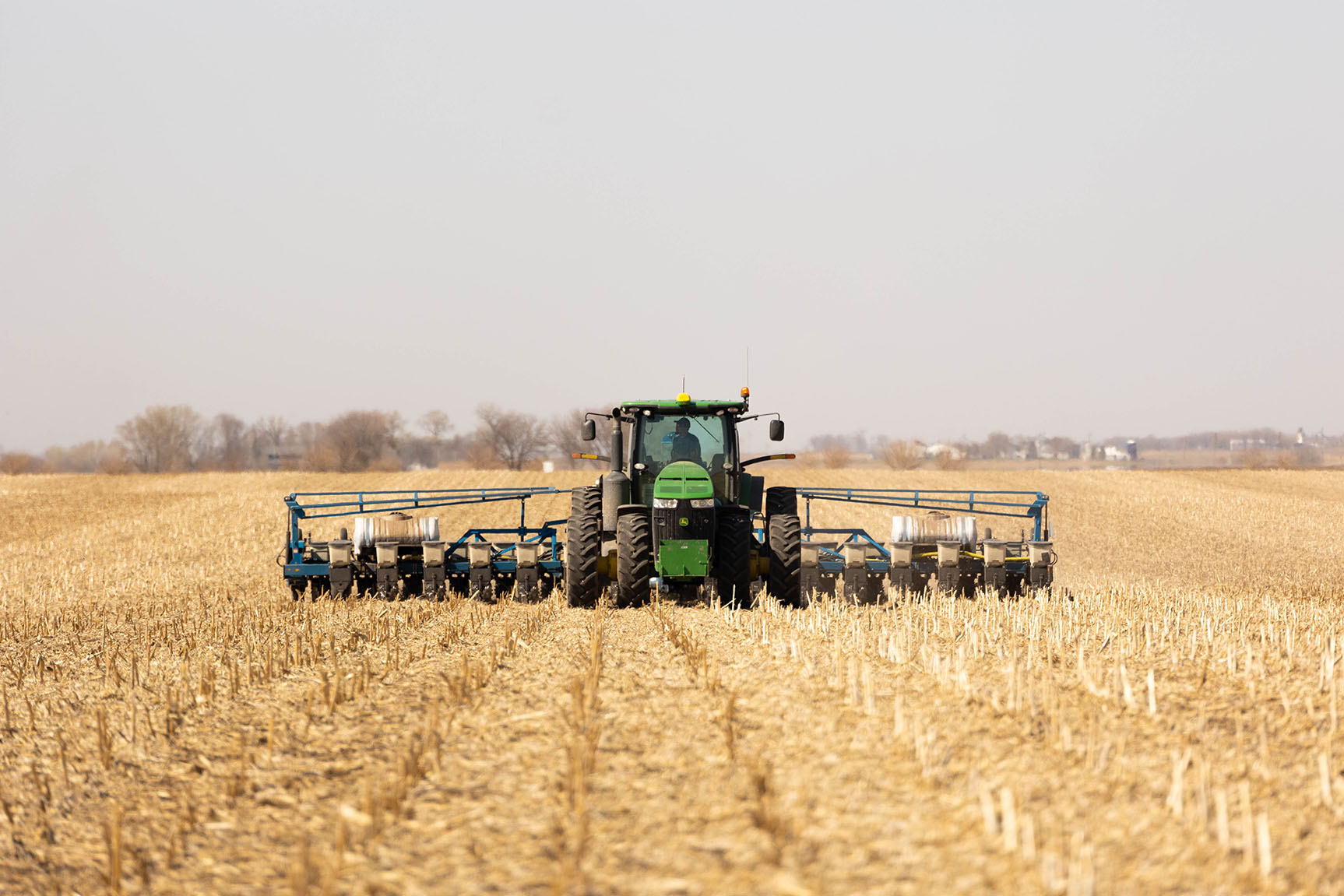
USDA estimates farmers will be planting less soybean acres switching focus to corn for 2025. (Photo: Iowa Soybean Association/Joclyn Bushman)
Fewer acres to soybeans, more to corn
April 2, 2025 | Kriss Nelson
There’s usually a great deal of anticipation surrounding the last business day of March.
That’s because it’s the annual release date of the United States Department of Agriculture’s (USDA) Prospective Plantings report. The report involves survey-based estimates of U.S. farmers’ planting intentions for the upcoming crop year.
Suspense has been growing the past few weeks as traders have been trying to predict which way the USDA would go and what effect the report would have on the markets.
“I would stress this is USDA’s first guess at the year for acres,” says Nick Repke, commodity advisor of Kluis Commodity Advisors. “Weather dependent, this will probably be the lowest soybean and biggest corn acres we will see.”
Prospective Planting Report
Although highly anticipated, the report came with little surprise as soybean acres were reduced from last year, coming in slightly below expectations at 83.5 million acres. Repke says the trade was expecting 83.75 million acres.
“This is not a lot of soybean acres,” Repke says. “There’s not a lot of wriggle room, fundamentally speaking, with these acre numbers. We can’t have any hiccups when it comes to yield.”
Prospective corn acres are 94.3 million acres, a million more acres than analysts predicted.
Little market reaction
It is not uncommon for the annual Prospective Planting report to cause a stir in the markets, but that was not the case on Monday.
“It was more muted than expected, but the numbers were not all that surprising,” says Repke. “The report was what the markets and most traders were thinking, so there were no shocking surprises to disturb the markets.”
Soybeans closed down nearly 9 cents, and corn closed up close to a nickel.
Waiting game
The weather and how farmers choose to react to this report will be determined in the next few months.
“We could see some farmers leaning heavier on corn that can make them some money,” says Repke. “Or, vice versa, they may decide to plant more soybeans after hearing there are fewer soybean acres as it could mean a bigger opportunity for soybeans to rally and become more profitable.”
Patrick White, Iowa Soybean Association farmer-member from Clay County and owner of AA Commodities and Investments in Spencer, says farmers in the northwest portion of the state seem to be leaning toward planting more corn.
“I have heard that some farmers are switching more acres to corn,” says White. “I have spoken to two separate seed dealers from Clay County, and they both said they have farmers switching to corn due to the poor economics of soybeans this spring.”
White notes this year is unique since total crop acres expected to be planted are down by 1.268 million acres.
“This shows us that the enthusiasm to plant anything is lower this year,” he says. “Currently, corn’s share of all the crop acres is a record 30.8% vs. the old record of 29.6%.”
An interesting part of the report was that a million more acres are going to corn and soybeans than last year, as wheat and cotton have dropped acreage.
White notes with reductions for wheat, cotton and soybeans totaling 5.5 million acres and acreage reduction for every other crop besides sorghum show that corn is the runaway favorite crop this year.
“This is needed since the current world corn supply is so low and could help reduce the
chances of tariff impacts on soybeans,” he says. “I think the corn acreage figure could be raised even further to 96-plus million down the road, and history tends to agree with that.”
Quarterly Grain Stocks report
The USDA also released its Quarterly Grain Stocks report on Monday. Much like the Prospective Plantings report, Repke says it came with little change and surprise.
Soybeans stored in all positions on March 1 totaled 1.91 billion bushels, up 4% from last March. Soybean stocks stored on farms are estimated at 877 million bushels, down 6% from a year ago.
Off-farm stocks, at 1.03 billion bushels, are up 13% from last March.
Indicated disappearance for the December 2024 - February 2025 quarter totaled 1.19 billion bushels, up 3% from the same period a year earlier.
Corn stocks in all positions on March 1 totaled 8.15 billion bushels, down 2% from last year.
Of the total stocks, 4.50 billion bushels were stored on farms, down 11% from a year earlier. Off-farm stocks, at 3.65 billion bushels, are up 12% from a year ago.
December 2024 - February 2025 indicated that the disappearance of 3.92 billion bushels was compared with 3.82 billion bushels during the same period last year.
Marketing tips
Repke recommends selling at profitable levels, which, unfortunately neither corn nor soybeans are at for most farmers.
“We are coming to, seasonally speaking, the best three months of the year for corn and soybean markets,” he says. “From a marketing standpoint, we don’t want to give up ownership at these levels at this time of year. Keep looking for better prices or better basis.”
Repke notes that many eagerly await the USDA’s yield report, published alongside the May World Agricultural Supply and Demand Estimates (WASDE) report.
Back